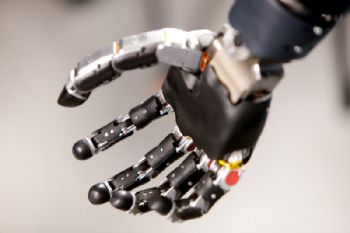
A breakthrough in energy storage technology could bring a new generation of flexible electronic devices to life, including solar-powered prosthetics for amputees.
In a paper published in the journal Advanced Science, a team of engineers at the University of Glasgow discuss how they have used layers of graphene and polyurethane to create a flexible super-capacitor that can store power from the sun.
They have demonstrated the effectiveness of their new material by powering a series of devices, including a string of 84 power-hungry LEDs and the high-torque motors in a prosthetic hand, allowing it to grasp a series of objects.
The research towards energy-autonomous e-skin and wearables is the latest development from the University of Glasgow’s Bendable Electronics and Sensing Technologies (BEST) research group, led by Ravinder Dahiya (
www.gla.ac.uk).
The top layer is made from graphene, a highly flexible and transparent ‘super-material’ formed of carbon layers just one atom thick.
Sunlight that passes through the top layer is captured by a layer of photovoltaic cells below, with any surplus power stored in a newly developed super-capacitor made from a graphite-polyurethane composite.
In laboratory tests, the super-capacitor has been powered, discharged and powered again 15,000 times with no significant loss of function.
Professor Dahiya said: “This is the latest development in a string of successes we’ve had in creating flexible graphene-based devices that can power themselves from sunlight.
"Our new super-capacitor, which is made from inexpensive materials, takes us some distance towards our ultimate goal of creating entirely self-sufficient flexible solar-powered devices that can store the power they generate.
"There’s huge potential for devices such as prosthetics, wearable health monitors, and electric vehicles that incorporate this technology.”